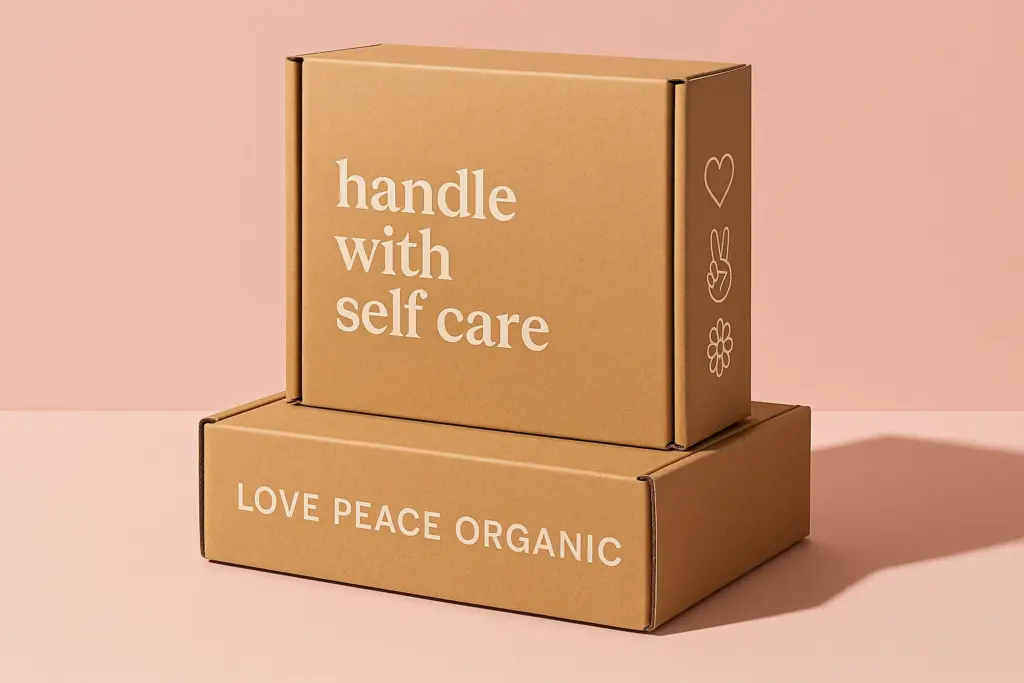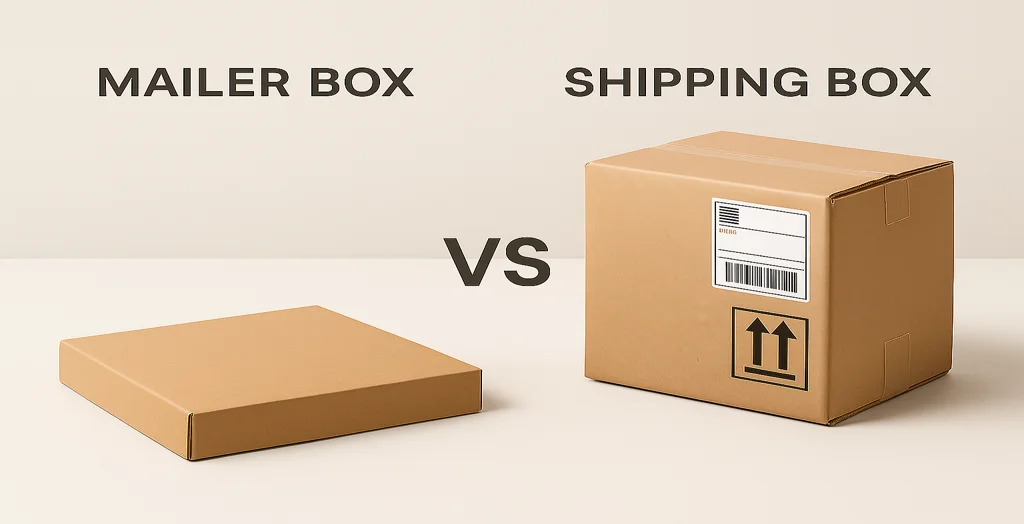TL;DR — Mailer vs Shipping Boxes — Which One Does Your Business Actually Need?
Don’t waste budget or risk product damage! Whether you’re building a brand or sending bulk stock, knowing when to use a mailer box vs a shipping box can save you money, improve unboxing, and protect your products. This guide breaks down structure, cost, strength, branding, and use cases — so you never choose the wrong box again.
Introduction: Mailer Box vs Shipping Box — Why It Matters
In the world of eCommerce and retail packaging, choosing between mailer boxes and shipping boxes isn’t just a logistical decision — it’s a branding, cost, and customer experience decision too. With packaging playing a vital role in how products arrive and how customers perceive your brand, knowing the difference between these two popular box types is essential.
This guide breaks down the structural, functional, and visual differences between mailer boxes and shipping boxes, so you can confidently choose the best option for your product and business.
What Is a Mailer Box?

A mailer box is a self-locking box made from lightweight but durable corrugated cardboard, typically E-flute or B-flute. These boxes don’t require tape and are designed for easy assembly and presentation.
Key Features:
- Self-locking, no tape needed
- Lightweight and sleek
- Ideal for unboxing experiences
- Suitable for retail, subscriptions, and DTC brands
- Custom print-ready on inside and outside
Mailer boxes are often used by fashion, beauty, and gift brands who want their packaging to feel as good as the product itself.
What Is a Shipping Box?

A shipping box refers to the standard RSC (Regular Slotted Container) box you see in warehouses and deliveries. Made from heavier corrugated grades like C-flute or double-wall B/C, it’s built for strength and long-distance protection.
Key Features:
- Requires tape to seal
- High strength for bulk/fragile shipping
- Efficient for stacking and palletising
- Cost-effective for large-scale delivery
These boxes are best suited for logistics-heavy businesses, warehouses, and any shipment were protection trumps aesthetics.
Side-by-Side Comparison: Mailer vs Shipping Box
Feature | Mailer Box | Shipping Box |
Construction | Self-locking | Tape-sealed |
Material Flute | E/B-flute | B/C-flute, Double-wall |
Durability | Medium protection | High protection |
Branding | Full-colour print, inside & out | Usually one-colour or labelled |
Best Use | Retail, subscription, PR kits | Long-haul, bulk, fragile items |
Assembly | Quick and easy | Moderate time + tape |
Unboxing Experience | Designed to impress | Functional over stylish |
Material Matters: Corrugated Grades
- Mailer Boxes often use E-flute for its printability and B-flute for added strength.
- Shipping Boxes typically use B-, C-, or double-wall combinations for stacking and heavy-duty protection.
Each corrugated grade affects the box’s strength, cost, and weight — which ultimately influences courier fees and storage.
🔗 Learn more about corrugated cardboard material grades
When to Use Mailer Boxes
Choose mailer boxes if:
- You’re shipping direct to consumer (DTC)
- Unboxing experience matters
- Products are lightweight to moderately heavy
- You want strong brand presentation
Ideal for:
- Subscription boxes
- Skincare and beauty
- Apparel and fashion
- PR and influencer kits
Explore: Custom Mailer Boxes →
When to Use Shipping Boxes
Choose shipping boxes if:
- You’re shipping in bulk or wholesale
- Products are fragile, heavy, or oversized
- You prioritise protective packaging
- You need to stack shipments
Ideal for:
- Fulfilment centres
- B2B shipping
- Electronics and glassware
- Multi-item product packs
Explore: Custom Shipping Boxes →
Cost Comparison: Mailer vs Shipping Box
Mailer Boxes:
- Higher unit cost due to design and customisation
- Lower quantities suitable for boutique orders
Shipping Boxes:
- Economical for large orders
- Cost-effective for high-volume or unprinted needs
While mailers win in aesthetics, shipping boxes excel in price-per-unit for logistics-heavy businesses.
Branding: Which Box Is Better for Your Brand?
Mailer Boxes:
- Ideal canvas for full CMYK branding
- Matte, gloss, foil, or UV options
- Interior printing boosts unboxing delight
Shipping Boxes:
- Commonly use one or two-colour prints
- External labels for branding
- Great for minimalist identity
If your brand lives on social media, mailer boxes deliver an experience worth sharing.
Which Box Is More Sustainable?
Both boxes can be made eco-friendly. However:
- Kraft mailers are often seen as the greener, retail-forward option
- Shipping boxes use more material, but are recyclable and efficient for bulk
How to Choose the Right Box: Checklist
✔ Product weight & fragility
✔ Delivery distance
✔ Packaging presentation
✔ Budget per unit
✔ Storage and fulfilment setup
✔ Branding goals
✔ Material preference
Final Verdict: Mailer or Shipping Box?
If presentation matters and your products are light to medium weight — go for mailer boxes. If you’re shipping large, heavy, or multiple products — shipping boxes are the safer choice. Some businesses use both: mailer box inside a shipping box for fragile high-end products.
Ready to choose the perfect box for your business?
Get a free quote on custom mailer and shipping boxes today.
FAQ: Mailer Box vs Shipping Box
What is the difference between a mailer box and a shipping box?
Mailer boxes are designed for presentation and branding. Shipping boxes focus on strength and bulk protection.
Which is stronger: mailer or shipping box?
Shipping boxes are typically stronger, especially when made with C-flute or double-wall materials.
Can I ship products in a mailer box?
Yes, as long as the product isn’t too heavy or fragile. Mailer boxes are used widely in DTC brands.
Are mailer boxes more expensive?
Per unit, yes. But they add marketing and unboxing value that can drive repeat sales.
What’s better for eco-conscious brands?
Both options are eco-friendly if made with recycled kraft board and non-toxic inks.








